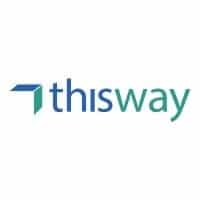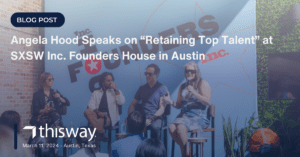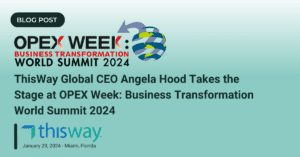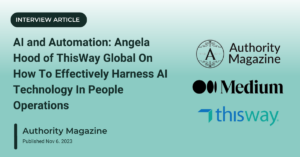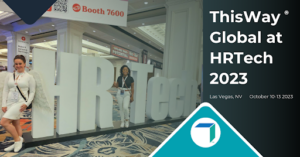Benefits of Diversity and Inclusion in the Workplace
ThisWay is a technology company that helps organizations source and attract the best talent, without bias. We are on a mission to help companies build diverse teams and create more inclusive workplaces by sourcing more diverse applicants than any other company in the world. Yes, those are audacious goals but 5000+ companies will be using our technology to solve their hiring problems in 2022 so we are well on our way to growing diversity and inclusion in the workplace.
We know it can be hard to find qualified and diverse candidates when you are already maxed out on the hours you work each week. That’s why we devoted seven years towards building technology to help recruiters and hiring managers identify the right talent, faster and with greater confidence because who your recruit reflects directly on who you are as a business.
ThisWay’s Comprehensive Guide for Diversity Recruitment will help you to define the struggle and explore the benefits, as well as the solutions you can put in place today. Our shared goal is to help you achieve diversity across your organization.
Your struggle is real.
And we want you to know that you are not alone in recognition that today’s talent market is one of, if not the most challenging of the modern era. Add the increased demand for greater diversity and many recruitment teams feel they are being set up to fail at meeting their own metrics, as well as the company’s diversity objectives.
Let us help you.
Five major obstacles this guide will enable you to overcome and meet your diversity objectives:
1) Poorly aligned diversity recruitment metrics
2) Lack of access to diverse talent pools
3) Job descriptions that alienate diverse applicants
4) Difficulties with sourcing and attracting diverse talent
5) How to obtain hiring manager buy-in on the importance of diversity
Before we dig into the how, it is important to understand why diversity matters in the workplace and understand its benefits to you, your organization, coworkers, and ultimately your customers.
Five Benefits of Diversity and Inclusion in the Workplace:
1) Improved morale, creativity and productivity at work
2) Diverse talent is more actively engaged in their work and problem solving
3) Diverse workforces bring different perspectives on things like design, engineering and marketing
4) Diverse recruitment mindset signals that your company is proactively aligned with ESG standards held by the world’s best companies
5) Grow shareholder approval and excitement about investment into your company
Companies have finally begun to realize how essential the recruitment and talent functions are in their companies. Companies are only as strong as the engagement from their employees. Talent and diversity focused teams have finally received a long overdue invitation to have a seat at the table where strategy decisions are made.
However, a significant shortfall continues to handcuff the efforts of professionals working to deliver the best talent to their organizations. The handcuffs come in the form of a lack of personnel and financial resources.
To be more blunt, many companies are still giving lip service to these issues, even with the promised investment of over $50 billion dollars, only $250 Million ( or .05%) has been deployed.
So let’s break each struggle down, piece by piece.
1) Poorly Aligned Diversity Recruitment Metrics
C-Suite executives have been analyzing their teams and realizing there is a lot of room for improvement in their organizations. To their credit, many want to take swift action towards positive change.
The challenge they face is that even though companies like ours were championing diversity for nearly a decade, this is the first time we have provided specific guidance to companies that weren’t our customers. Without guidance there have been some well intentioned weak starts.
Fact #1 – We should not see a candidate’s photo or their name during initial screening, here’s why.
More than 5 million people have taken Harvard’s Implicit Association Test (IAT), at https://implicit.harvard.edu/implicit/user/agg/blindspot/indexrk.htm which aims to help people identify their unconscious biases. Among those who have taken the test:
— 80 percent of people prefer younger people over older ones
— 75 percent of the people prefer white people over minorities..
— 45 percent of the black people taking the test also favor white people over people of color
As humans we are incapable of managing unconscious biases but we can hide the data that allows these biases to have information that can be acted upon. This is a huge advantage that less than 3% of companies currently use to their advantage.
Download “Diversity and Inclusion in the Workplace” as a PDF
Example A:
Leadership Directive: ‘Hire X% more black women.’
Challenge: Are you supposed to hire more black women and not more black men? Are you supposed to set aside qualified, hispanic women due to the executives directive? How should you consider veterans with this directive?
While setting a specific goal is meaningful, this type of directive is biased, damaging, discriminates against others and is wrong. Yet the majority of companies we speak to, prior to working with us, started with a flawed strategy very similar to what is described above.
Example B:
Secondly, if you are truly being unbiased you should not know if the person is male, female, non-binary, etc. You should also not know the color of their skin. This means you should not be relying on LinkedIn or similar visual data for your initial screening. You should only be considering the data that will indicate if the person has the ability to do the job.
There is an extraordinary high level of bias infused into our visual experience. When people are shown the photo below they ‘see’ one white woman and one black woman.

While very rare, these two women are in fact twins. Although they have the exact same ethnicity people do not ‘see’ them in the same way. This represents an extreme case but also an excellent example of why we cannot ‘judge a book by it’s cover.’
These are just two examples of why setting specific gender, ethnicity or other bias stereotypes as metrics is a failed strategy from day one. And why it is that we cannot rely upon a visual experience to inform our initial screening of candidates.
If you are faced with this challenge please share this with your leadership and encourage them to reach out to our team. We are here to help you and your organization through these challenges and we can share additional resources that will help create a fair sourcing process for your company.
2) Lack of access to diverse talent pools
Over the course of the last seven years we needed to understand stories of diverse people to better facilitate meaningful technology. Through this effort we have built a strong network of over 3500 organizations that participate in our diverse talent network.
Any organization can join for free and their network of members receive jobs that are aligned with the type of roles these members are looking for.
This network is open to all of our customers, as long as they are acting with good faith efforts towards recruiting and hiring fairly.
Gaining access to this network is automatic, you just have to speak to a member of our team.
3) Job descriptions that alienate diverse applicants
For over four years we analyzed and A/B tested job descriptions and what we learned was quite awful.
Most job descriptions are written in ways that alienate diverse applicants. There are a lot of obvious changes to be made, like using the word ‘ninja’. Most diverse applicants respond negatively to a possible role requiring them to have ninja-like skills. Using more inclusive language, like ‘strategic’, will enable you to attract a qualified set of talent that has been dismissing your job opportunity.
The structure of the job description also matters a great deal. Long paragraphs attract different applicants that have bulleted requirements. Knowing when to use which format took us a long time to figure out. In case you hadn’t noticed, people are wonderful but they also behave in unexpected ways, hence why we had to do so many years of testing on this one.
It took over 150 engineers to help us identify the problem and test alternative solutions for the more than 45,000 different job types. It was painful but a worthwhile endeavor.
Now we provide customers with this automatically because we know you don’t have time to rewrite all of your job descriptions. (not sure if this sentence goes here or down at the bottom of this section)
If you aren’t one of our customers you can still make significant headway by:
a: optimizing the first two sentences of your job description to focus on the person you want to hire and the job they will be doing, not your company
b: pushing the company details to the bottom of the job description, just above the EEOC language
c: using basic language to describe if this person will be an individual contributor or manager and telling how many people they will manage on a daily basis
Our technology automatically corrects for 42 other key attributes in job descriptions but addressing these three key elements can provide a great deal of improvement.
Now we provide customers with this automatically because we know you don’t have time to rewrite all of your job descriptions.
4) Difficulties with sourcing and attracting diverse talent
This is often caused by the diverse talent looking at your current leadership team or recruitment team and not seeing themselves in your organization.
First and foremost, be transparent if you do not have much diversity in your team. Share that the organization is working hard to make real, meaningful change and feel confident enough to ask for feedback and advice on the company’s efforts.
FACT: Scientific American research has proven that asking for advice
makes a great impression when building relationships.
Additionally, institute a mentoring program to help diverse team members feel welcomed and let them know they have an empathetic sounding board to help them.
Lastly, let them know that your company has an open door policy on equity, inclusion and belonging. Even if the candidate doesn’t join the organization, they will think more positively about your brand.
5) How to obtain hiring manager buy-in around the importance of diversity.
This is one of the most overlooked aspects of a successful recruiting strategy, whether the goal is diversity or not.
Most executives do not fully understand the amount of influence that hiring managers exert on sourcing and recruitment teams. This influence is often very biased and in many cases unfair.
The two actions we have seen bear the greatest fruit are:
1) sharing written metrics, objectives and statements passed to you from your leadership regarding diversity and inclusion initiatives
2) share research on the topics of diversity and ask the hiring manager for advice on how they recommend you meet the new requirements
It’s also helpful to share that a greater amount of bias exists in highly intelligent people. They have developed a series of short cuts towards decision making that has helped them be more successful. These shortcuts are also a shortcut to bias.
Not surprisingly, people are more receptive to the idea that they are biased once they know it is so closely tied to intellect.
Bias is not the same thing as being discriminatory or bigoted. (more on that here link)
Mitigating bias and being open about it is the smart thing to do for your team and your business outcomes.
ThisWay is here to help.
__________________________________________________________________________
As we shared with thousands of our customers during the pandemic, McKinsey’s report, ‘Diversity Wins. How Inclusion Matters‘ highlighted that business executives identified the COVID-19 crisis as one of the greatest challenges of their professional careers. It was recognized that ‘a visible commitment to I&D during the crisis is likely to strengthen companies’ global image and license to operate‘. It is now clear that companies have to act on this advice if they are to succeed in the attraction of critical talent, no matter the level of job.
In the COVID-19 crisis, inclusion and diversity matter more than ever
For business executives the world over, the COVID-19 pandemic is proving to be one of the greatest leadership tests of their careers. Not only must they protect the health of their employees and customers, they must also navigate far-reaching disruption to their operations, plan for recovery, and prepare to reimagine their business models for the next normal.
In this challenging context, the task of fostering inclusion and diversity (I&D) could easily take a back seat—and the painstaking progress made by many firms in recent years could be reversed. As this report shows, however, I&D is a powerful enabler of business performance. Companies whose leaders welcome diverse talents and include multiple perspectives are likely to emerge from the crisis stronger. As the CEO of a European consumer-goods company told us:
“I know we have to deal with COVID-19, but inclusion and diversity is a topic too important to put onto the back burner.”
On the other hand, some companies appear to be viewing I&D as a “luxury we cannot afford” during the crisis. We believe such companies risk tarnishing their license to operate in the long term and will lose out on opportunities to innovate their business models and strengthen their recovery.
If companies de-prioritize I&D during the crisis, the impact will be felt not just on the bottom line but in people’s lives. Research and experience warn that diverse talent can be at risk during a downturn for several reasons—for example, downsizing can have a disproportionate impact on the roles typically held by diverse talent. As companies send staff home to work, this could reinforce existing exclusive behaviors and unconscious biases and undermine inclusion. In addition, inequality with regard to sharing childcare and homeschooling responsibilities, as well as the quality of home workspace (including broadband access), could put women and minorities at a disadvantage during this time of working remotely.
Companies need to seize this moment—both to protect the gains they have already made and to leverage I&D to position themselves to prosper in the future.
There is ample evidence that diverse and inclusive companies are more likely to make better, bolder decisions—a critical capability in the crisis. For example, diverse teams have been shown to be better able to radically innovate and anticipate shifts in consumer needs and consumption patterns. Moreover, the shift to technology-enabled remote working presents an opportunity for companies to accelerate building inclusive and agile cultures—further challenging existing management routines. Not least, a visible commitment to I&D during the crisis is likely to strengthen companies’ global image and license to operate.
Why is diversity so important?
- Diversity improves decision making.
- Diverse teams are better able to radically innovate and anticipate shifts in consumer needs and consumption habits than homogeneous groups.
This is crucial during a crisis where companies need to make quick decisions on how best to respond at each stage of recovery from the pandemic.
What triggered significant investment into achieving diversity now?
Many people see the racial tensions in 2020 and the rallies for Black Lives Matter as the critical inflection points for this investment. While these were contributing factors, back in 2017 our R&D team identified this important shift in workplace demographics.
Prior to 2000 most US workers identified as being part of the white/caucasian demographic and men held a majority or jobs, across all job types.
As we entered into the new century we also entered into a new era for our workforce.
Each year more workers identify as one or more ethnicities and we began to see small gains in women holding a wider range of job roles, including those jobs that had been held predominately by men.
These small shifts each year began to aggregate into a larger wave of workforce diversity amongst the ranks, primarily in entry level jobs. By 2010 data began to reveal more diverse hiring managers, sourcing teams and recruiters. Finally, after management consultants highlighted the benefits of diversity in 2017 we began to see some large corporations focus on improving diversity in middle management.
A focus on increased diversity at the board and executive levels continues to be a significant challenge but one that began to be addressed due to external pressures like that of the NASDAQ’s policy directive in December of 2020.
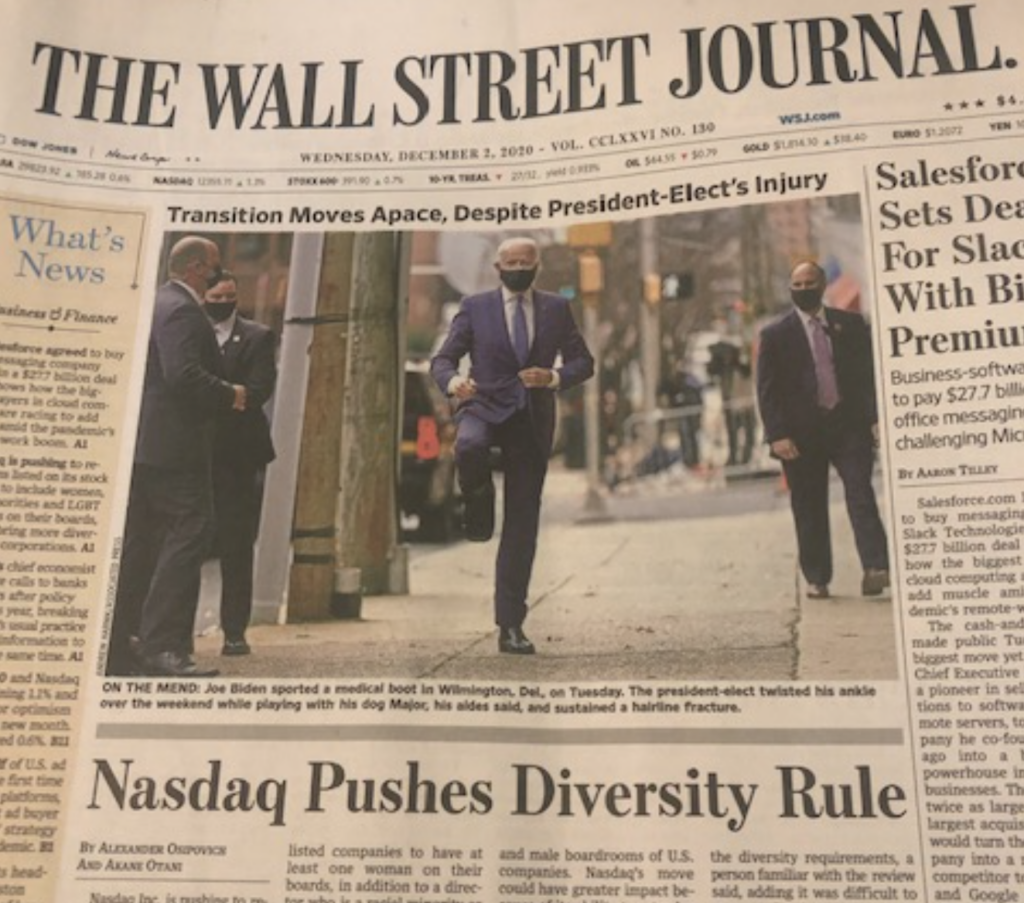
Decision has been delayed but is expected this summer 2021
The culmination of these individuals being more diverse began a ripple of diversity that evolved into a tide. Even still few business leaders gave more than lip service to the growing talent diversity gap.
This avoidance of the diversity storm brewing continued until the summer of 2020, following Minneapolis police officer’s killing of security guard, George Floyd.
On June 6th, 2020 over 500,000 people protested the treatment and killing of Floyd in 550 different locations around the US. While this event was not tied to the workplace, the event highlighted the racial tensions that have been growing. These tensions had been experienced at work and people of all ethnicities and walks of life began protesting for immediate change.
Over the next 12-18 months we would see billions pledged by companies who claimed that they were committing resources towards meaningful change.
As of June 2021, when our company was fortunate enough to have long-time diversity champion, Torin Ellis, as a guest to speak with our team, Ellis shared that this problem continues to receive lip service by most businesses, both large and small.
Of the 56 $billion pledged, industry analysts see that only a very small fraction has actually been deployed.
The difference this time around is significant.
Candidates are openly boycotting employers that do not act with intention around fairness and increased diversity and inclusion.
Employers are refusing to return back to work following the pandemic and many are citing their disagreement with their companies diversity and inclusion principles and commitment as a key reason why they are choosing to change employers.
Download this article, “Diversity and Inclusion in the Workplace” as a PDF
